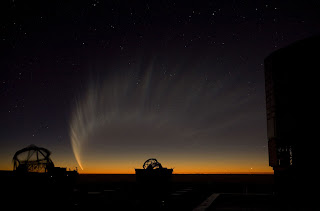| This is where i did my CSC assignment. I saw a lot of this stuff while I was there. Very cool. |
From Evernote: |
The European Southern Observatory - In Focus - The AtlanticClipped from: http://www.theatlantic.com/infocus/2013/01/the-european-southern-observatory/100444/ |
The European Southern Observatory
High in the Atacama Desert of northern Chile, the European Southern Observatory (ESO) has built several collections of telescopes and observatories on remote, arid mountaintops. The locations are ideal for ground-based astronomy -- far from city lights, high above sea level, with more than 350 cloudless days a year. The ESO is an intergovernmental research organization with 15 member states, founded in 1962. It has been making observations from the southern hemisphere since 1966, and continues to expand its facilities to this day. The sites are La Silla, which hosts the New Technology Telescope (NTT); Paranal, home to the Very Large Telescope (VLT); and Llano de Chajnantor, which hosts the APEX submillimeter telescope and the Atacama Large Millimeter/submillimeter Array (ALMA). Construction on the newest project in Chile's desert -- the European Extremely Large Telescope (E-ELT), a 40-meter-class telescope -- is due to start later this year in Cerro Armazones. I've collected below some amazing images of the ESO's observatories, and a few of the astronomical images they've been able to make over the years. [34 photos total]





























































No comments:
Post a Comment